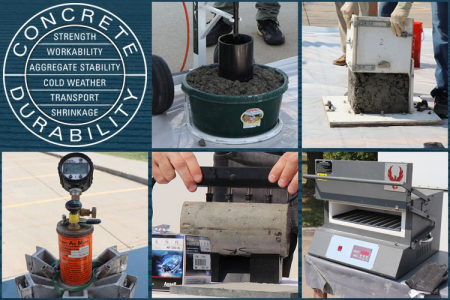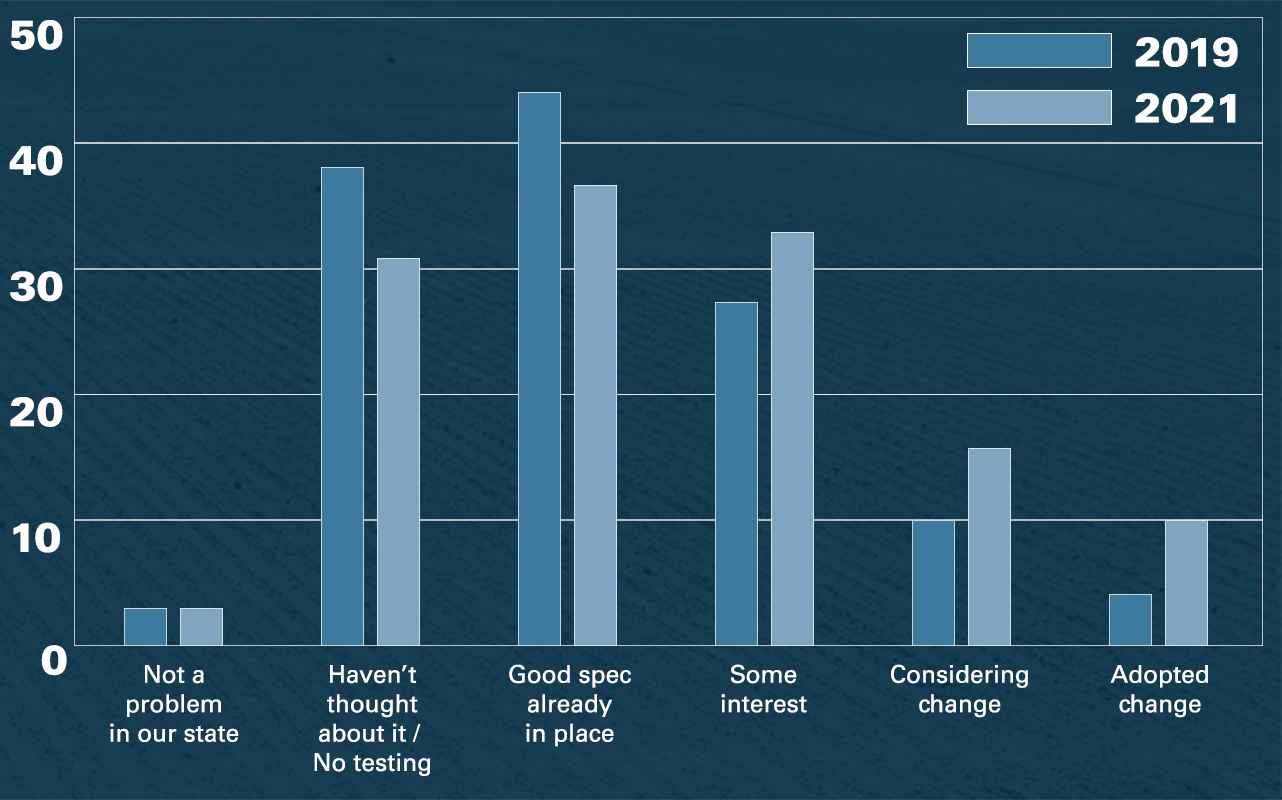InTrans / Jul 12, 2023
CP Tech Center publishes final report on PEM pooled fund

“The aim of the program was to help states develop better specifications by focusing on the properties that matter and implementing approaches to evaluate those properties using appropriate test methods.”
The CP Tech Center has published the final report on a 5-year project to improve the long-term performance of concrete pavements, conducted under a Transportation Pooled Fund (TPF-5(368)) as a joint venture between Oregon State University (Jason Weiss), Oklahoma State University (Tyler Ley) and Iowa State University (Peter Taylor). As recent developments in concrete testing technologies have produced methods that better measure pavement reliability, this project sought to identify key testing technologies that are needed to incorporate these developments into concrete pavements.
“The aim of the program was to help states develop better specifications by focusing on the properties that matter and implementing approaches to evaluate those properties using appropriate test methods,” said Peter Taylor, CP Tech Center director. “The goal was to reduce the risk of accepting concrete that would not survive as intended, while also reducing the dependence on old methods that are no longer ideal. We also sought to help contractors consistently produce mixtures that would comply with these needs.”

Accomplishments of PEM
The Federal Highway Administration, 19 state transportation agencies (shown above), 7 paving chapters from Minnesota, Pennsylvania, Michigan, Wisconsin, Iowa, Oklahoma/Arkansas, and the Southeast, and 4 national associations (ACPA, PCA, RMC Research and Education Foundation, and SCA) joined to fund this project. Study participants were supported in implementing improved specifications for mixtures within their states, gathering field performance data, and using available measurement technologies to design and control concrete pavement mixtures around key engineering properties. Activities included the following:
- Formal test training was provided in 12 of the 19 pooled fund member states.
- Shadow projects supported state agencies in implementing PEM and using new testing methods. When possible, open houses were held during shadow projects to provide education on the program and demonstrate new PEM tests.
- 82 workshops, meetings, and webinars facilitated technology transfer for PEM across the country.
- A PEM webpage was created.
- A PEM database included data collected by state agencies during the shadow test projects.

- Several test methods in the areas of strength, shrinkage, freeze-thaw durability, transport, aggregate stability, and workability were studied in the PEM effort. Because each state agency is unique in the way they specify concrete pavements, Table 2 in AASHTO R 101 gives the agency choices on select PEM properties and their standard test methods.
Surveys of pooled fund member states were conducted in 2019 and 2021 to better understand their pavement specifications and whether their specifications had changed based on what they had learned from the PEM program. Results showed that agencies had started incorporating PEM in their specifications or were considering a change.

“It is notable that at least 17 states have adopted at least one of the recommendations developed and implemented under the program,” Taylor said. “Work will continue to help states continue to improve their specifications.”
Continuing with PEM
A new pooled fund, Performance-Centered Concrete Construction (P3C), focuses on construction operations after a mixture leaves the batch plant, including the use of the appropriate amount of vibration for consolidation as well as effective finishing, curing, saw-cutting, and sealing operations.
“The P3C program will seek to adopt a similar mindset of monitoring the concrete as it is transported, placed, and finished to ensure that the concrete in its final position achieves the promises of the batched material,” Taylor said.
Successful completion of the project will involve the development of specifications and guidance tools for technology transfer, including videos, written documents, and training programs.
For more on the PEM program, see the final report and tech transfer summary.
